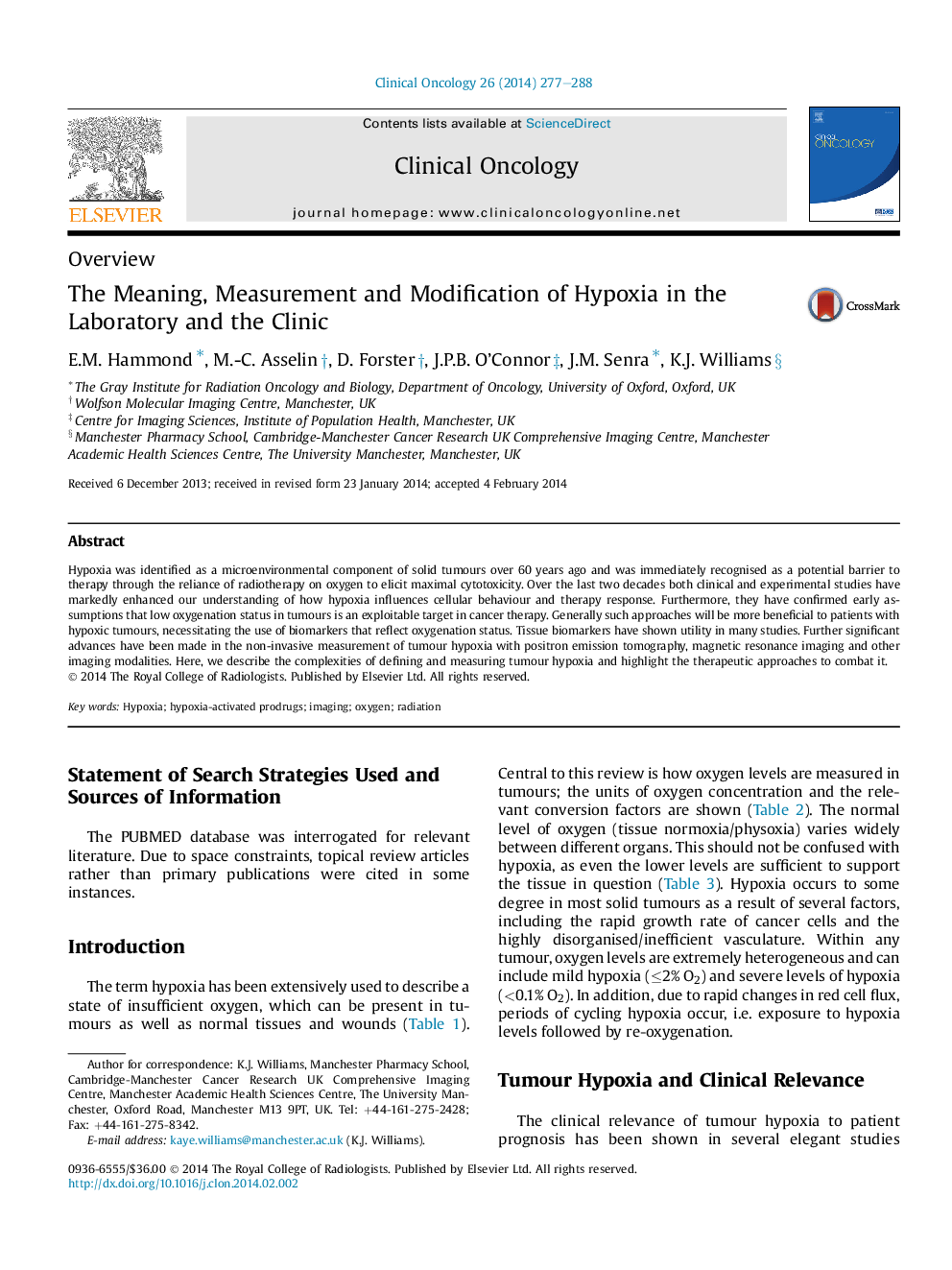| Article ID | Journal | Published Year | Pages | File Type |
|---|---|---|---|---|
| 5698627 | Clinical Oncology | 2014 | 12 Pages |
Abstract
Hypoxia was identified as a microenvironmental component of solid tumours over 60 years ago and was immediately recognised as a potential barrier to therapy through the reliance of radiotherapy on oxygen to elicit maximal cytotoxicity. Over the last two decades both clinical and experimental studies have markedly enhanced our understanding of how hypoxia influences cellular behaviour and therapy response. Furthermore, they have confirmed early assumptions that low oxygenation status in tumours is an exploitable target in cancer therapy. Generally such approaches will be more beneficial to patients with hypoxic tumours, necessitating the use of biomarkers that reflect oxygenation status. Tissue biomarkers have shown utility in many studies. Further significant advances have been made in the non-invasive measurement of tumour hypoxia with positron emission tomography, magnetic resonance imaging and other imaging modalities. Here, we describe the complexities of defining and measuring tumour hypoxia and highlight the therapeutic approaches to combat it.
Related Topics
Health Sciences
Medicine and Dentistry
Oncology
Authors
E.M. Hammond, M.-C. Asselin, D. Forster, J.P.B. O'Connor, J.M. Senra, K.J. Williams,
